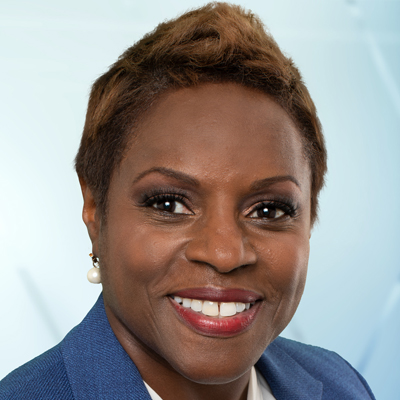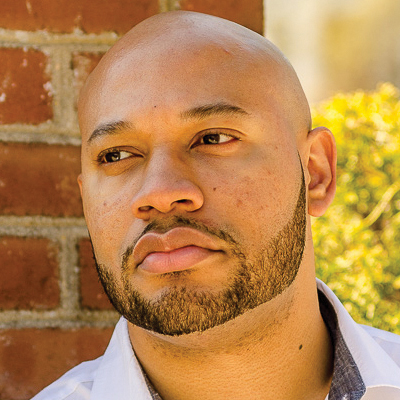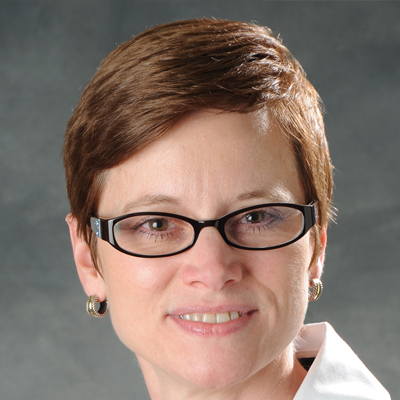The Many Facets of D&I
How Insurers Profit by Serving a Diverse and Inclusive Customer Base
Insurers say they’re working to reach consumers of all backgrounds now that social change is driving opportunity.
Some insurers are meeting demographic and societal changes by providing new products and services designed to serve diverse communities. Insurers say they want to reach consumers of all backgrounds who are searching for ways to protect their homes, their businesses and their lives.
A panel of insurance industry leaders recently met with AM Best TV to discuss how social change is driving opportunity. The panel included Patti Griffin, former chief product officer at Duck Creek Technologies and a board member at insurance payments company One Inc., and Jewelers Mutual Insurance Group; Dianne Greene, global head of inclusion, diversity and belonging at Verisk Analytics; and D'Juan Hopewell, co-founder of InsureBlack.
Following is an edited transcript of the discussion.

Specific to the insurance industry and the risk management industry, I’m happy to say that we are experiencing a shift.
Dianne Greene
Verisk Analytics
Can you give us a brief overview of InsureBlack—what it is and how it came to be?
Hopewell: InsureBlack really comes out of a deep history, a history that I really wasn't aware of. In fact, Black insurance companies, historically, were the largest Black-owned businesses in the country and the only ones that reach industry scale.
In our communities, the capital for mortgages, business development—all these things came out of these companies. When we looked at that, we said, “Well, why not revive that, why not do something about that.” InsureBlack is a platform that helps consumers connect with Black agencies from across the country to protect their home, life, business and everything that matters.
Have Black and minority communities traditionally been underserved when it comes to insurance product offerings?
Hopewell: Black folks have been focused on survival—the immediate needs of, let's say, employment, and, yes, justice. There's not the luxury sometimes to think beyond that and say, “Twenty years from now, this product can help my children in this way,” when today, I'm trying to get my children to navigate this complex lottery into a school. You have that. [However,] we've historically had a world where no one's actually creating products to service Black people. That's generally still the case today. What exists and what doesn't exist, there's still a gap there.
Do you think the insurance industry is or has been missing an opportunity?
Hopewell: My father is a preacher, believe it or not, and one of the other things that he did was he cleaned carpet. He had a client that got rich by, I think, putting copy machines in law offices. He told my dad, “The way you get rich is you find a need and you fill it.” Very, very simple. In this industry, there's a place where specific, measurable large-scale consumer-driven need meets responsible, innovative and diverse product solutions. That place is called opportunity.
Are you hopeful that things are changing? What changes would you like to see, particularly when it comes to product offerings?
Hopewell: In this industry, I don't know that the appetite has been there to tailor products toward Black families.
When you look at the data on Black wealth, I don't know that hope is a luxury we can still afford. It would take real systematic changes in product design, underwriting and knowledge distribution channels to inspire hope.

When you look at the data on Black wealth, I don’t know that hope is a luxury we can still afford.
D’Juan Hopewell
InsureBlack
What does diversity and inclusion look like in the insurance industry?
Greene: Specific to the insurance industry and the risk management industry, I'm happy to say that we are experiencing a shift. We are taking incremental steps to address systemic and economic disparities. We are not seeing huge results just yet, but it's a start.
Insurance companies are starting to amplify their focus and to create D&I accountability within their organization—as I said, rethinking the term diversity to also include diversity of thought and diversity of experiences so that we can innovate faster and we can meet consumer needs.
There are a bunch of studies out there. I won't go into too many of them. On the U.S. side, the Bureau of Labor Statistics data helps us to know where we have the greatest opportunity. I would say globally, it's in women in insurance.
In the U.S., it's women in insurance and also underrepresented ethnicities within the insurance industry: Blacks and African Americans, the Latinx population, and Asian. For the U.S. women, let's just talk about that a little bit. We're making up 47% of the industry. Yet when you look at executive and senior levels, we're only representing 20%.
If you go further and you look at the entry level, we're very well represented. Particularly in clerical roles for insurance claims and policy processing, the number is somewhere around 80%.
What that tells us is we're not having issues acquiring female talent. What happens once they are acquired? Where's the development, the mentorship, the sponsorship for women in our organizations?
The same is true for underrepresented ethnicities—Blacks, African Americans, Latinx, and our Asian population. What is good is that insurance companies are recognizing that without the internal structures and the accountability measures in place to help support and navigate the employee life cycle, longevity and career satisfaction will be lacking for these individuals.
Is the insurance industry making strides to meet the needs of a diverse community?
Greene: Let me say three things. One, we need more data analytics and insights in the insurance industry.
The second thing is we need to recognize that people with different needs worldwide need to be addressed. We need to remove barriers to entry in our workforce.
The third piece, which is a big piece, is the need for regulatory and policy changes in insurance—an agreement at the industry level for those changes to be measured and executed.
Is there a way for insurers to be servicing potential customers who may be uninsured or underinsured?
Griffin: From a customer service perspective, providing options to customers and making it easy and simple for them to do business with you is important. One example is payments. For various reasons, there are groups of people who don't use traditional banking. The term that's sometimes used for this is “unbanked.”
They do not have traditional bank accounts. There's no bank account for funds to be deposited into or a banking relationship which allows them to cash a check without paying a fee. Sometimes check-cashing fees can be 15%. These folks are unbanked. The question is, how do you service these customers?
The key to this customer service need is offering diverse payment options based on how the customer wants to make a premium payment or how they want to be paid for a claim.
It's about offering the customer options and particularly digital options. When you think about digital payments, most people are familiar with PayPal, for instance—that's been around for some time. There are options like Venmo, where you can send and accept payments to [and] from other people. We can make purchases now that are not on Amazon, but we can pay for them using Amazon Pay through our Amazon account.
Digital wallets are becoming more common, using your phone to make payments and the use of Apple Pay and Google Pay. There are virtual cards which work similar to a physical credit or debit card, but without actually having a plastic card.

In recent years, as we’ve seen new types of businesses emerging, new ways of doing business, and a different type of shared economy that we’re living in—it’s created opportunities for new types of insurance products to be introduced.
Patti Griffin
One Inc.
You used the term unbanked. Who is unbanked?
Griffin: It's anyone who doesn't have a traditional bank account or a banking account relationship.
Do you think insurers should be looking to develop products for a diverse customer base, whether that diversity means people of color, the LGBTQ community, women-owned businesses, millennials, or any number of other people across our broad mosaic?
Griffin: In recent years, as we've seen new types of businesses emerging, new ways of doing business, and a different type of shared economy that we're living in—it's created opportunities for new types of insurance products to be introduced.
One area where we have an opportunity to serve small businesses, particularly minority small businesses, is in the types of insurance products that are offered. For example, there are new types of business emerging with people moving their business to work out of their home or starting businesses which they are running out of their home. We are seeing the line blur between personal and commercial use of the home. With this comes the opportunity to offer new and innovative insurance products.
This all begs the question, then: Why aren't more insurers offering these types of products and services?
Griffin: If you consider that some older legacy systems were introduced more than 14 years ago, you can begin to imagine how hard it would be for those older systems to support the introduction of new insurance products and the type of customer service that's required today.
The ability to pay with digital methods and having a standard communication method of text messaging wasn't something that was contemplated when older legacy systems were developed. The underlying technology needs to support what we're talking about here today, and also, the products and customer preferences that will be desired in the future.
What's a good first step for the insurance industry to take to change things?
Hopewell: You have to start with: Who are we talking to? Who are we incorporating? Who are we including in that process?
Greene: The challenge becomes when you don't go out looking for the right expertise. You don't go out looking for underrepresented talent, for them to give the experience and for them to share the experiences so that we can do better.
Griffin: Know the customer or the customer that you want to serve and know their needs.
Could the first changes that need to come take place in hiring practices so as to better understand the need for change?
Greene: I am a strong believer that we have to get diversity, equity and inclusion in our people practices and policies within our organizations. That's at the starting point: the sourcing of candidates, the hiring process, the candidate experience, onboarding. What happens when they're here?
Ten years from now, are we still in the same place where we are today? Or is the issue resolved or somewhere in between, making strides but not quite there yet?
Griffin: I would say making strides, but not 100% there. If you look historically at the prior five or 10 years and the pace of change we have seen—I don't know that we will be able to claim victory 10 years from today. I wish we would, but I don't know that we will have.
Greene: I agree with her 100%. Listen, this is difficult work. It is difficult to move the needle on all things diversity, equity and inclusion related. It does not happen overnight. It doesn't happen even within six months. You've got to be pragmatic and prescriptive about what you're doing.
Hopewell: I believe that it was after Bloody Sunday in Selma, 1965. Lyndon Johnson gets up before Congress and he says the words, “We shall overcome,” which in that moment of history was like saying “Black Lives Matter” today. It's a big moment.
Then the country is burning again in a couple of years. Then last summer, the country is burning again. History dictates that we go through cycles of progress and regression. I don't know that I'm big enough to stand against history, but we do the work.
AM Best TV
Go to www.bestreview.com/d-i to watch the full lineup of programs in The Many Facets of D&I.